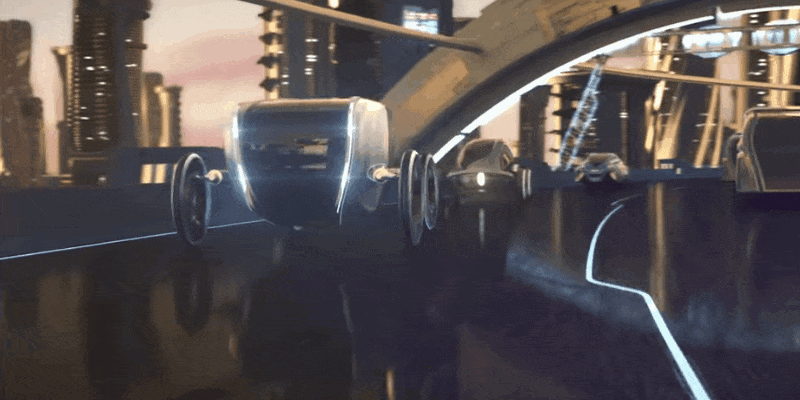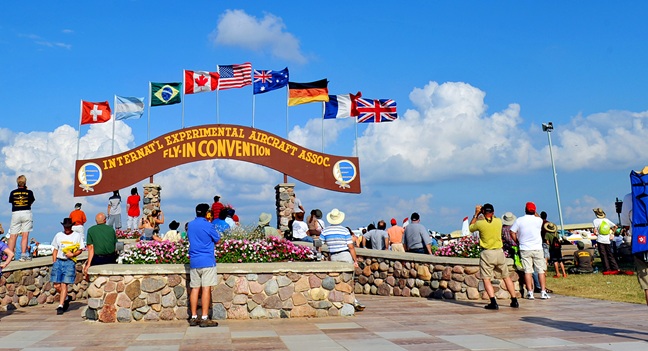Goodyear Creates a Flying Tire Displayed this week at the Geneva Auto Show, Goodyear’s new AERO wheel is not just rolling stock, but a possible aeronautical device that could propel a “flying car” skyward. Not only could it roll along the freeway, it could navigate the vehicle and choose whether to be in highway or aerial mode. These smart tires could have some problems, though, that could negate their aerial potential, according to some critics. Goodyear’s press release extols the possible virtues of the forward-thinking product: “GENEVA, March 5, 2019 /PRNewswire/ — The Goodyear AERO concept is a two-in-one tire designed for the autonomous, flying cars of the future. This concept would work both as a tire for driving on the road and a ‘propeller’ for flying through the sky.” Chris Hensel, Goodyear’s Chief Technology Officer, explains: “For over 120 years Goodyear has obsessively pursued innovations and inventions, partnering with the pioneers driving change and discovery in transport. With mobility companies looking …
Verdego Aero – Another Variant on VTOL Travel
A Controversy for Starters Skeptics abound concerning the current spate of vertical takeoff and landing (VTOL) machines. The latest entry in the competition comes from the trio of Erik Lindbergh, Eric Bartsch, and Pat Anderson of Embry-Riddle Aeronautical University. Their Verdego eight-rotor machine looks a bit like the Airbus A3 Vahana, but has pusher, rather than puller, propellers on the rear wing. On his Linked In page, Bartsch jumps into an ongoing fray with his article, “The Inevitability of Short-Range Urban Aviation – Why I’m Betting Against the “Flying Uber” Skeptics.” It takes aim at the opposing point of view in “Going Direct: On the Insanity of Flying Ubers,” by Plane & Pilot writer Robert Goyer. To shorten the two arguments to their most primal levels, Eric Bartsch thinks sky taxis are coming and are inevitable. Goyer thinks the idea is insane and not supported by even basic physics or available mechanical systems. He doesn’t acknowledge an advantage to having …
eSpirit of St. Louis Runs at Oshkosh
One of the biggest thrills this year at Oshkosh was getting to see Eagle Flight Research Center’s DA-36 run its YASA electric motor. Eagle Flight, an outgrowth of Erik Lindbergh’s Powering Imagination program he’s been pursuing for the last several years, aims to create quiet electric aircraft that will carry sight-seers over National Parks and Monuments. Such flights would not disturb people or wildlife below, and would give a Gabriel’s eye view of the most pristine places in our country. International Approval His ideas have met with international support. As noted on the YouTube video of their meeting, “… Flavia Schlegel (Assistant Director-General (ADG) for the Natural Sciences) at UNESCO in Paris… gave an enthusiastic endorsement of our eSpirit of St. Louis electric aircraft development program!” Your editor became aware of the project when he spoke at the Powering Imagination Symposium at Seattle’s Museum of Flight in 2015. Erik told of his work with students at Embry Riddle Aeronautic University …
What We’re Looking Forward to at AirVenture 2017
We’re looking forward to seeing progress in electric aircraft, and this year may be an opportunity to see real breakthroughs. Two from Pipistrel Besides its regular lineup of high-quality aircraft, Pipistel will have two Alpha Electro trainers on display in their display area. This is the first time these aircraft will be seen in America, and they’ll be at the right of AirVenture’s main entrance gate in sites 86 and 87. In the Ultralight Area Mark Beierle will display and fly Bravo, Richard Steeves’ e-Gull. This red, white and blue gem features a power system made from Zero Motorcycle components and boasts an impressive rate of climb and exceptional short field capabilities. Another ultralight, the EMG-6 developed over the last few years by Brian Carpenter of Rainbow Aviation/Adventure Aircraft, will show off the REX 30 MGM-Compro motor from the Czech Republic. The units, with their matching controllers, power dozen of different types of aircraft in Europe, from paramotors to Light …
Embry Riddle Begins GFC Test Flights
On August 23, 2011, the Embry Riddle Aeronautical University’s Green Flight Challenge hybrid-powered modified Stemme S10, the Eco-Eagle, began its ground tests on the Daytona Beach International taxiways, “Getting ATC used to us!” The next day saw several ground-skimming “flights,” starting at 2-feet, and rising to 10 and 50-feet high runs, all with the gear down. The day’s flights ended with a trip around the pattern for the airport’s longest runway. August 25 saw a morning excursion of 45 minutes, with the airplane flying in the face of the approaching Hurricane Irene. Test pilot Mikhael Ponso reported beautiful clouds and no high winds during the seven laps around the field. As he tested the gear retraction and various flap settings, he was able to sort things out for the upcoming GFC flights in Santa Rosa, California during the last week in September. The school’s Eco-Eagle has a Rotax hybrid-power system originally developed for Flight Design, a German firm that builds …




